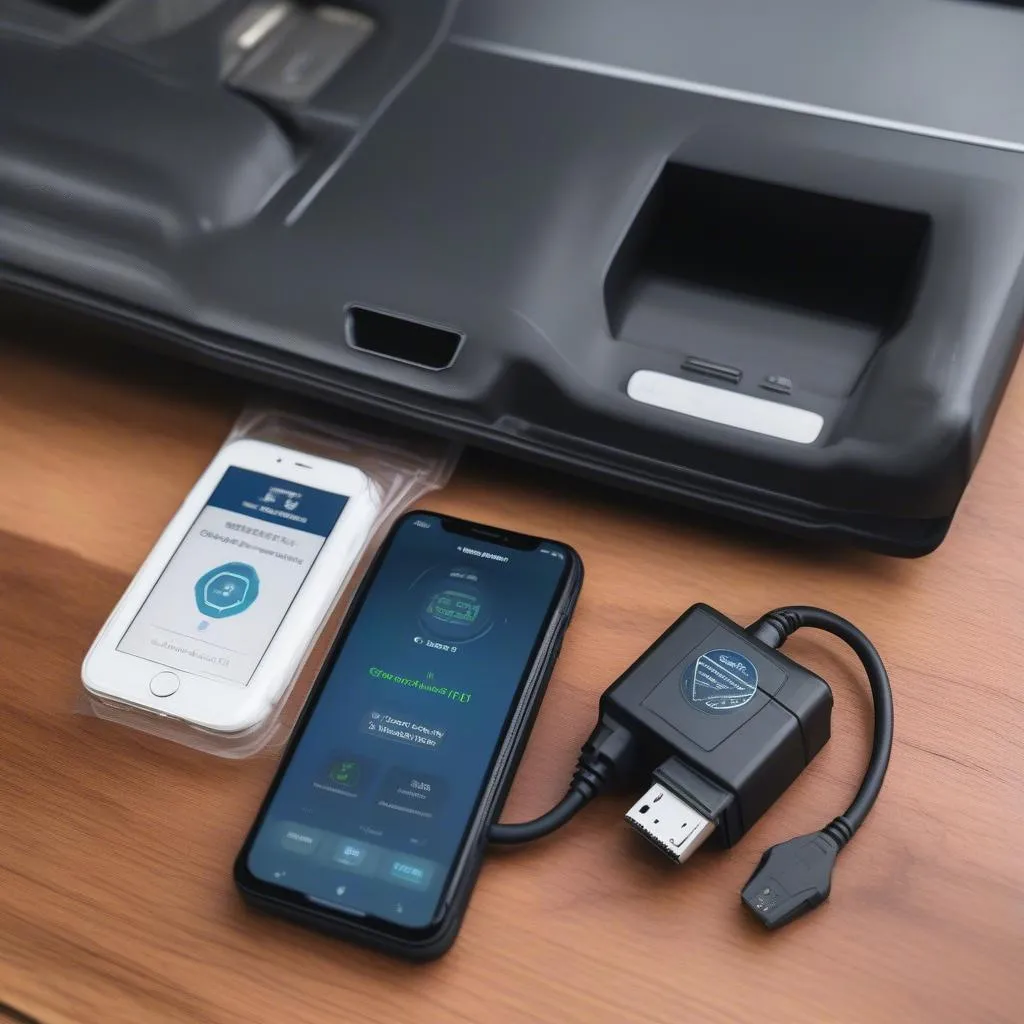Have you ever wondered what that little port on your car’s dashboard is for? It’s not a place to plug in your phone charger, but it’s actually a vital part of modern vehicles, known as the Obd Ii Connector. This seemingly innocuous port is your window into your car’s engine and other vital systems, offering a wealth of information and diagnostic capabilities.
What is an Obd Ii Connector?
The OBD II connector, short for On-Board Diagnostics II, is a standardized connector found in most gasoline-powered vehicles manufactured after 1996 in the United States and after 2001 in Europe. It’s a 16-pin port that serves as a communication point between your car’s computer and external diagnostic tools.
Why is it so important?
Imagine this scenario: You’re driving your car and suddenly, the engine starts sputtering, and the “Check Engine” light illuminates on the dashboard. What do you do? Before you call a tow truck, you can actually use the OBD II connector to get some valuable insights into what’s going on.
The OBD II connector allows you to connect a diagnostic tool, like a code reader or a scan tool, to your car’s computer. This tool can read diagnostic trouble codes (DTCs), which are essentially error messages stored by the car’s computer about potential problems.
How it works:
- Information is power: OBD II connectors use a specific communication protocol, known as the SAE J1962 protocol, to exchange data between the diagnostic tool and the car’s computer.
- Data Decoded: The diagnostic tool then decodes this information, providing you with details about the potential problems or issues with your car.
- Taking Control: You can use this information to troubleshoot potential issues, identify the root cause of the “Check Engine” light, or even track your car’s performance.
The Power of Diagnostics
The OBD II connector isn’t just for diagnosing problems. It can also provide valuable information about your car’s performance, helping you optimize your fuel efficiency or monitor your emissions.
Applications:
- Monitoring fuel consumption: Some diagnostic tools can track your fuel consumption in real-time, allowing you to identify driving habits that might be affecting your fuel economy.
- Detecting emissions issues: OBD II can also detect potential emissions problems, helping you ensure your car is compliant with environmental regulations.
- Boosting performance: You can even use an OBD II tool to adjust your car’s performance parameters, such as tuning the engine or tweaking the transmission settings.
Finding the Obd Ii Connector
The OBD II connector is typically located under the dashboard, usually near the steering column, close to the driver’s seat. It’s often a black or green connector with a distinctive 16-pin configuration.
Exploring OBD II Connectivity
Bluetooth vs. WiFi:
 OBD II Connector Bluetooth vs WiFi
OBD II Connector Bluetooth vs WiFi
You can connect to your OBD II connector using different types of communication protocols. Bluetooth and WiFi are two popular choices.
- Bluetooth: This is a wireless technology that allows you to connect your smartphone or a dedicated Bluetooth scanner to your OBD II connector.
- WiFi: This option allows you to connect your OBD II connector to your car’s internal network or create a separate WiFi hotspot that you can connect to with your smartphone or laptop.
Common Obd Ii Connector Questions
Does my car have an Obd Ii Connector?
Most gasoline-powered cars manufactured after 1996 in the US and 2001 in Europe have an OBD II connector. You can confirm this by checking your car’s manual or by looking for the connector under the dashboard.
Where is the Obd Ii Connector located?
The OBD II connector is usually located under the dashboard, near the steering column, close to the driver’s seat.
Can I use any OBD II scanner?
While the OBD II connector is standardized, not all scanners are compatible with all vehicles. Some scanners may only work with certain car brands or models.
What kind of information can I get from my Obd Ii Connector?
You can get a wealth of information from your OBD II connector, including diagnostic trouble codes, real-time engine data, fuel consumption information, and more.
Can I use an OBD II scanner to reset the “Check Engine” light?
Yes, you can use an OBD II scanner to clear the “Check Engine” light, but this will only address the symptom, not the underlying problem. It’s crucial to address the root cause of the issue, not just clear the code.
Conclusion
The OBD II connector is a powerful tool that allows you to gain valuable insight into your car’s health and performance. With the right diagnostic tool, you can monitor your car’s vital systems, identify potential problems, and even optimize your vehicle’s performance. While it’s an incredibly valuable tool, it’s always best to consult with a qualified mechanic or car specialist for more complex diagnostic issues. For professional assistance with OBD II diagnostics and car repairs, please feel free to contact us via Whatsapp: +84767531508. We are here to provide expert help and support 24/7.